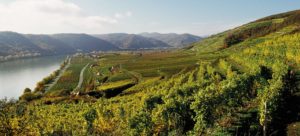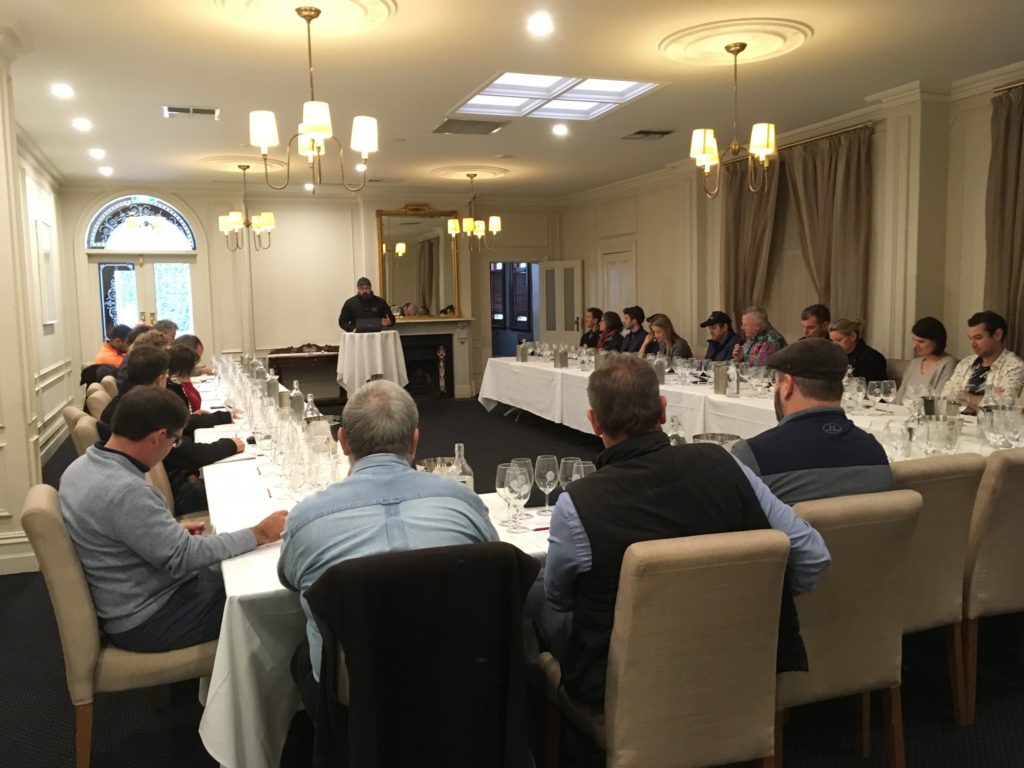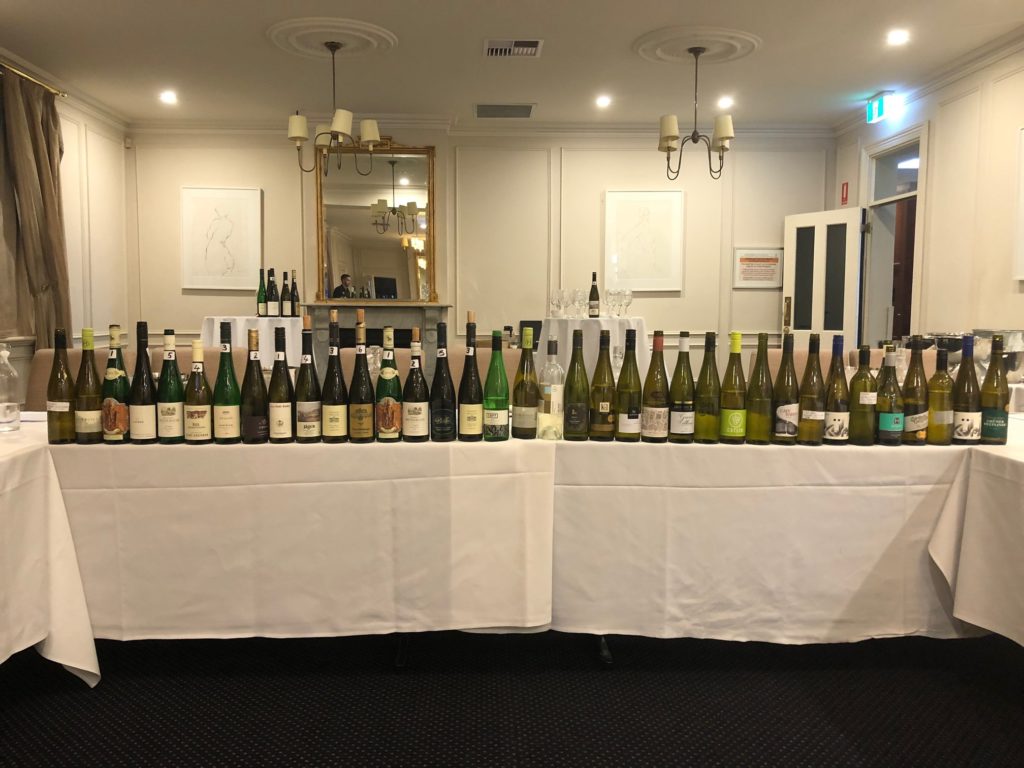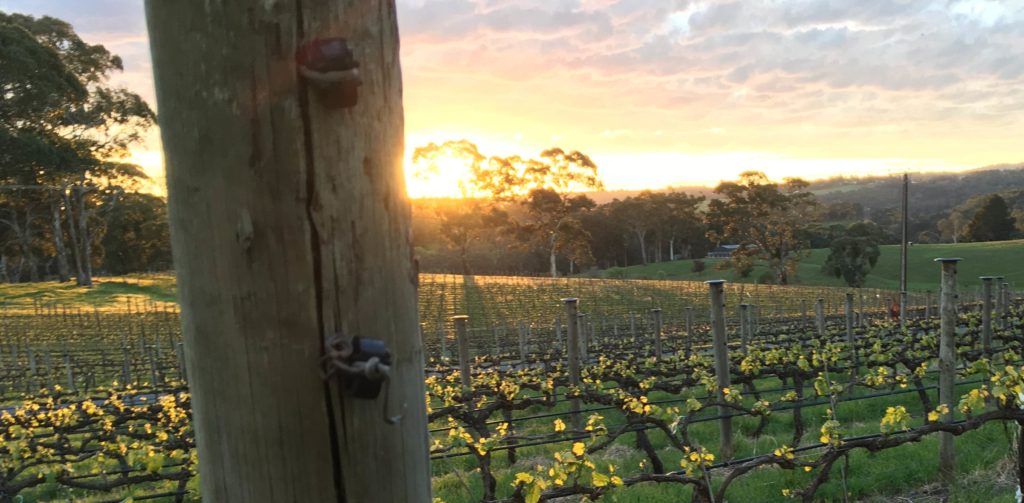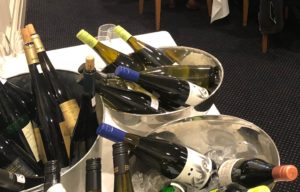
Hahndorf Hill Winery
  Adelaide Hills
Regular readers of this blog will by now be familiar with the system that classifies the different styles of wines produced in Austria’s highest profile region, the Wachau. This system referred to as the Wachau Codex has led the way in regulating quality control and restoring international faith in the wines of a whole country.
With rules that govern decisions made in the vineyard, winery and cellars, the Wachau Codex has sought to bulletproof the reputation and integrity of the wines produced along its short stretch of the Danube.
The Austrians love a rule book as much as their Germanic neighbours and the list of technicalities a wine must meet can quickly confuse and bamboozle, so let me simplify things a little by saying that the wines which meet the exacting standards set out in the Codex are sorted into three distinct categories:
• Steinfeder: Fresh, fruit forward and spicy. Alcohol level not to exceed 11.5%.
• Federspiel: Sophisticated orchard fruits, lean and acid driven. Alcohol levels restricted from 11.5% to 12.5%.
• Smaragd: Ripe, rich and opulent with excellent cellaring potential. Minimum alcohol level 12.5%. (Alcohol levels often at 13 – 14%.)
It is of course much more complicated than this simple abbreviation but for now let me draw you away from the Wachau; let’s descend its steeply terraced slopes and glide down the Danube, then head north across the rolling plains into the heartland of Austria’s largest wine region – the Weinviertel.
Producers outside of the Wachau take their quality control no less seriously and have adopted their own mechanisms to protect their reputations and customers. These areas subscribe to a master ‘DAC’ (Districtus-Austriae-Controllatus) template, where each region has set up a tailored system to suit their specific signature styles. While there are common principles and values, each region can tweak the fine print to best reflect their unique terroir.
The vast Weinviertel region in the north east of Austria was the first wine region to implement a DAC system, effective as of the 2002 vintage. Other regions soon followed and today the DAC system applies across Austria, including in the famous Gruner-producing regions of the Kamptal and Kremstal.
• This much more widely applied DAC system divides Gruner into two distinct styles – Klassik and Reserve.
Before an Austrian wine can be classified as either a Klassik or Reserve, it must first pass a range of specific quality requirements; all wines are submitted for sensory and chemical analysis to confirm that they meet this first level of quality control – primarily, that they accurately represent the variety’s regional typicity. Only once a wine has been approved for DAC classification can it then be labelled as one of the two recognised styles, Klassik or Reserve.
As I referenced earlier, each region can adapt this DAC template to suit its local specialities, so let’s zoom in on how this system classifies wines from Austria’s Kamptal region, a DAC that shares more than a few similarities with the Adelaide Hills, such as a similar MJT (of 19 degrees), a profound diurnal temperature variation (of up to 25 degrees), and a similar soil composition of red clay overlaying metamorphic rock such as slate, schist and quartz.
• In the Kamptal, wines designated as Klassik are described as being aromatic, spicy, well balanced, and with concentration reflective of that specific vintage.
• There are no botrytis or oak notes allowed and the alcohol level generally must be a minimum of 11.5%.
• This DAC Klassik style corresponds to the Federspiel style of the Wachau.
Kamptal Reserve styles are described as being:
• Robust, concentrated and long in the finish; delicate notes of botrytis and oak are permissible and the wine must also show pronounced ‘regional character’ (in the case of the Kamptal this means stone fruit, white pepper and citrus). The minimum alcohol level must be 13%.
• This DAC Reserve style corresponds to the Smaragd style of the Wachau.
The most recent Gruner Growers’ Group (GGG) meeting was held in July at the beautiful Victoria Room at the Edinburgh Hotel & Cellars in Adelaide, and it focused on the two predominant styles of Gruner as reflected in the DAC system and the Wachau Codex. This event was fully booked with Adelaide Hills’ growers and producers attending as well as journalist Dan Traucki.
To open the meeting, I delivered a short presentation on the DAC system as a whole, and then to contextualize and gain some perspective on the two different styles, I took the group through a tasting representing each flight, ranging in price, vintage and region.
Flight one featured six examples of the Klassik / Federspiel style.
1. 2017 Stadt Krems ‘Lossterrassen’ – 12% alc – Kremstal
2. 2017 Groiss – 12.5% alc – Weinviertel
3. 2017 Prager ‘Hinter Der Burg’ Federspiel – 12.5% alc – Wachau
4. 2016 Kurt Angerer ‘Kies’ – 12.5% alc – Kamptal
5. 2016 Brundlmayer ‘Terrassen’ – 12.5% – Kamptal
6. 2016 Loimer ‘Loiserberg’ – 12.5% alc – Kamptal
After this first flight we paused for discussion with several questions and comments focused on the wines’ vinification, local terroir and the DAC qualification requirements. The selection above represents some of what Gruner is capable of when treated with care and respect. When quality above quantity is the doctrine, Klassik/ Federspiel Gruners will titillate and beguile with refreshing acid and delicate fruits.
Flight two was devoted to the richer, more robust Reserve / Smaragd style.
1. 2016 Knoll ‘Schutt’ Smaragd – 13% alc – Wachau
2. 2015 Brundlmayer ‘Lamm’ Reserve – 13.5% alc – Kamptal
3. 2015 Domane Wachau ‘Achleiten’ Smaragd – 13.5% alc – Wachau
4. 2015 Jager ‘Vorder Seiber’ Smaragd – 14% alc – Wachau
5. 2015 F.X. Pichler ‘Loibenberg’ Smaragd – 14% alc – Wachau
6. 2015 Franz Hirtzberger ‘Axpoint’ Smaragd – 14% alc – Wachau
The Adelaide Hills has long been known as a region responsible for some of Australia’s best Chardonnays; so it was no surprise when the room got very quiet while tasting this flight, as the textured opulence of this bracket impressed us all.
Having recently tasted these wines I made a point of sitting back to study the faces of my colleagues and was delighted to see eyes widen and hurried notes committed to paper. The discussion that followed was long and passionate; several producers present have released wines in this spirit and I am supremely confident we will see more in the not too distant future.
Following the tasting of the Austrian flights, participants enjoyed an informal tasting of a range of Adelaide Hills Gruner Veltliners. So how does this all fit in with the way Gruner is evolving in the Adelaide Hills? So far, it is clear that the local producers are still experimenting with viticultural practices, yield management and how the grapes are dealt with in the winery. Stylistically, we are also still exploring, developing and learning, with each vintage bringing new experience and understanding.
It would be fair to say that most styles produced locally would fall into the ‘Klassik’ category, with a handful of wines using riper fruit, skin contact and some oak influence, which the Austrians would recognise as a ‘Reserve’.
In addition to this, there have been several locally developed Gruners that are distinctly more ‘fruit-forward’ in style – often being described as being as exuberant as a Sauvignon Blanc. If, however, one teases out these generous Gruner aromatics, then they are found to be in a spectrum of juicy citrus, nectarine, ruby grapefruit and even pawpaw flavours, and are therefore quite different and more complex to what Sauvignon Blanc is able to offer. This fruit-forward style shares a common DNA with that of Austria’s largest Gruner-producing region – the Weinviertel.
We have learnt that Gruner is an amazingly complex and expressive variety, capable of communicating in the bottle its entire life story: Where it came from, how long it hung out in the sun and the philosophies of the vintner.
Communication, co-operation and a shared sense of purpose are not common traits in an industry as competitive as ours, but we believe the ‘everyman for himself’ attitude is for those who sit squarely on their laurels. The spirit of the Gruner Growers Group is to look forward, to form the very tip of the spear.
Michael Sykes of Lodestone winery in the Adelaide Hills is arguably the most qualified Australian winemaker to speak about the technicalities of Gruner production and it was for this reason he was asked to be a judge at the recent Global Gruner Challenge. In the panel discussion afterwards, he put voice to a suspicion I have held for some time, that Australian Gruner Veltliner bears a stronger resemblance to its old-world relation that any other Australian varietal version -Â Chardonney to Chablis, or Pinot Noir to Burgundy, for example.
I am convinced that this is due in no small part to the GGG’s ongoing commitment to thorough study and research, intelligence sharing and due diligence.

